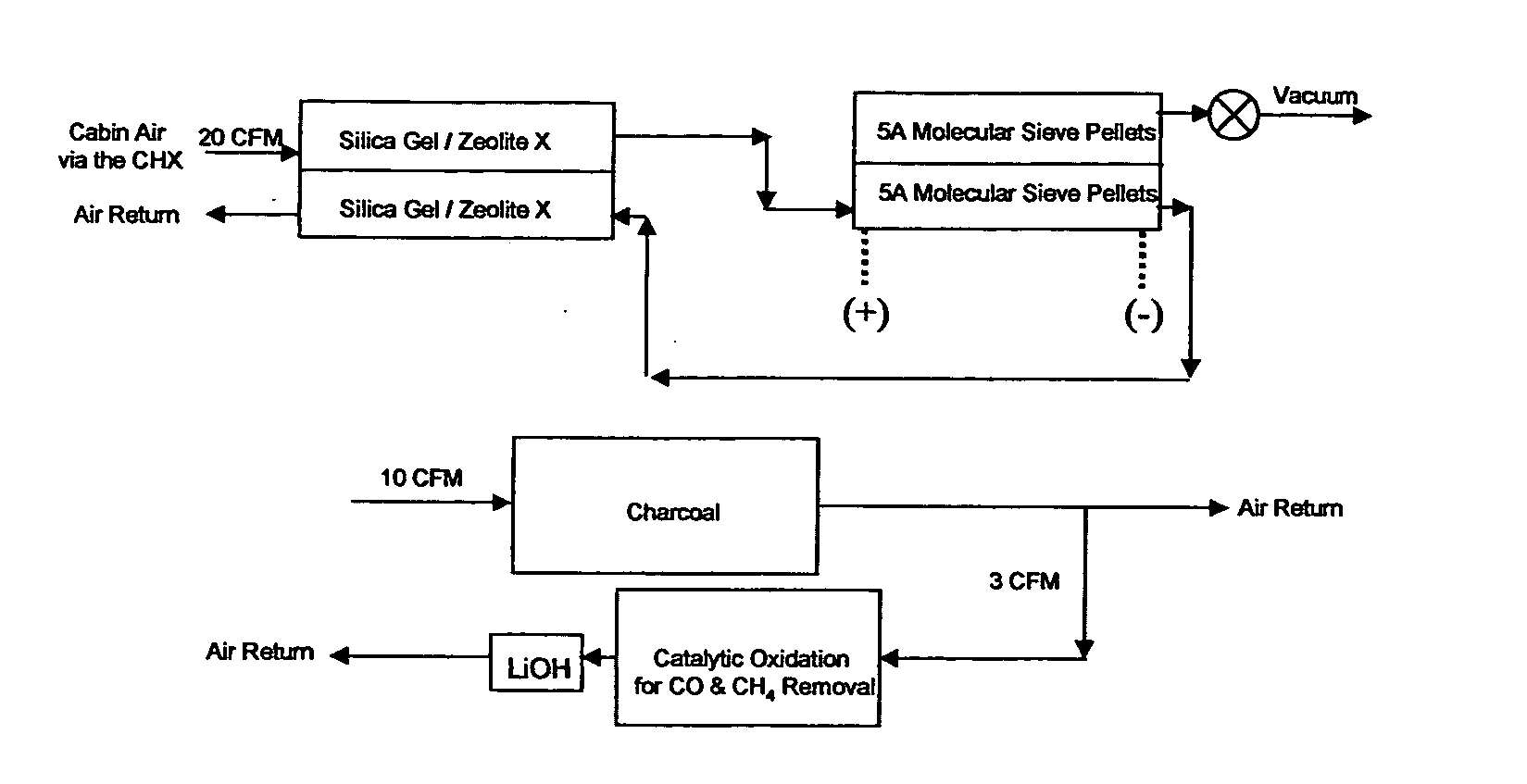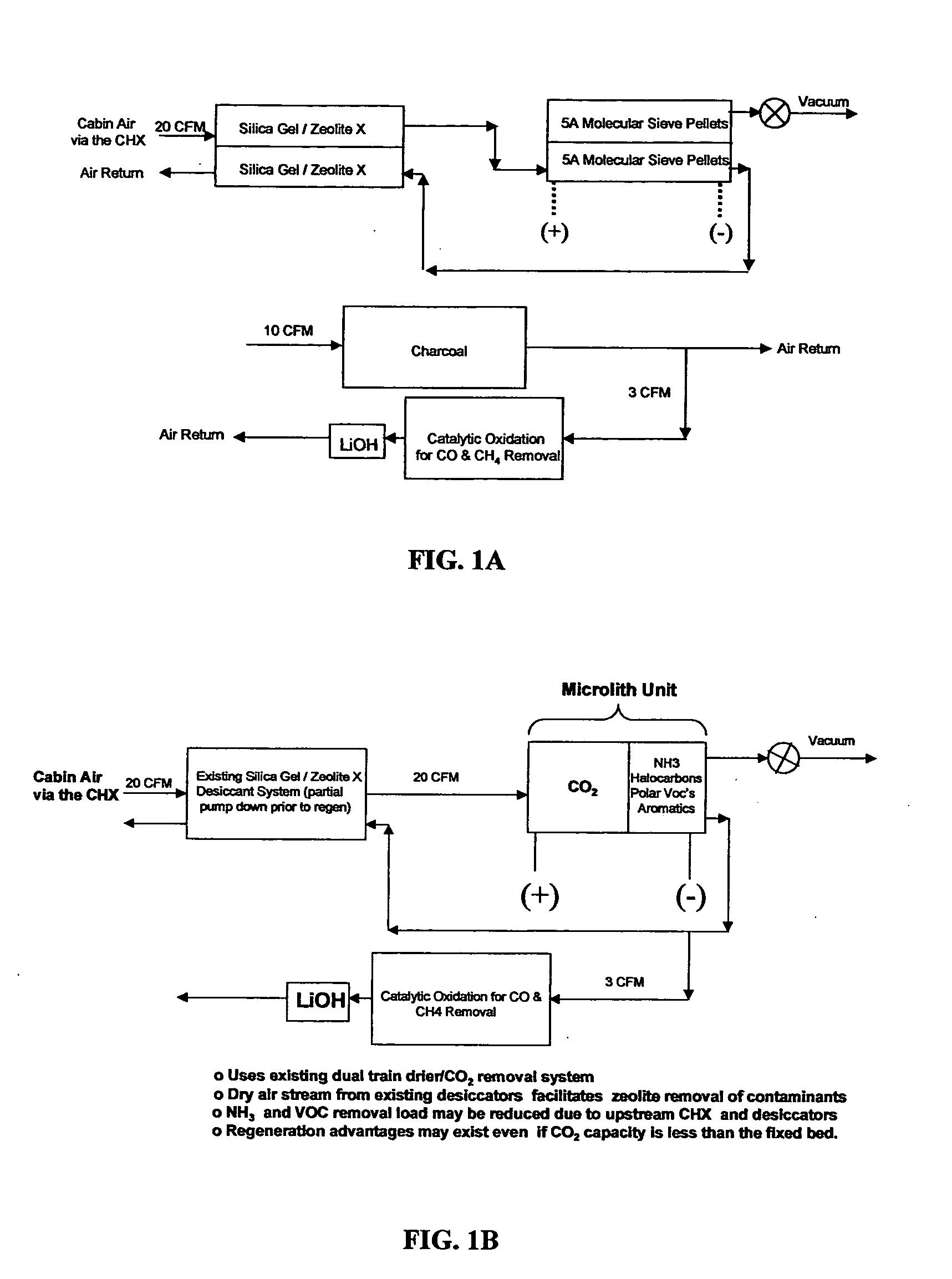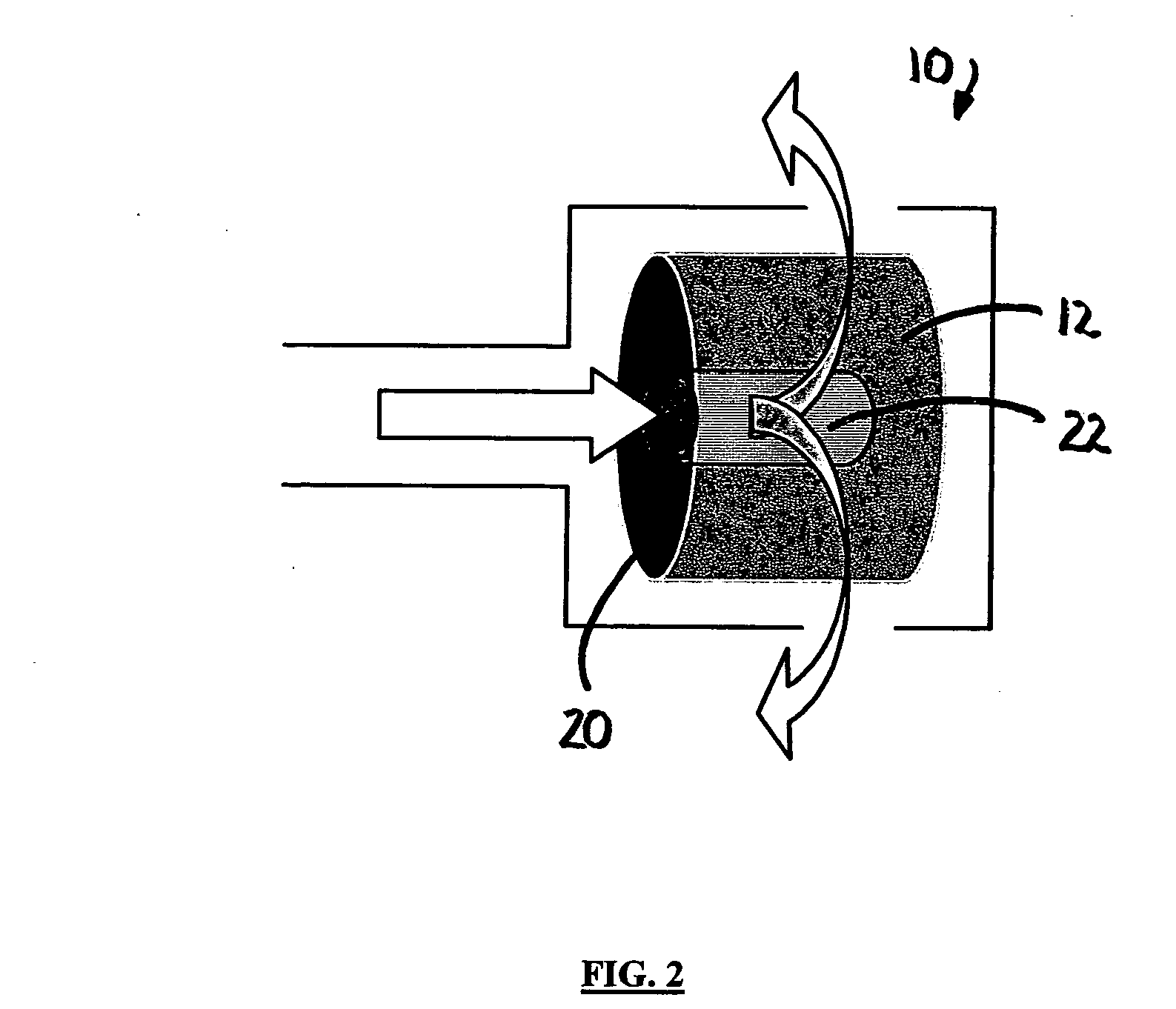Regenerable adsorption system
a sorbent and adsorption technology, applied in the direction of chemistry apparatus and processes, separation processes, dispersed particle separation, etc., can solve the problems of significant negative impact of humidity on the performance of zeolite sorbents, and achieve the effects of reducing power requirements, significant weight and volume savings, and net energy savings
- Summary
- Abstract
- Description
- Claims
- Application Information
AI Technical Summary
Benefits of technology
Problems solved by technology
Method used
Image
Examples
Embodiment Construction
[0022]FIG. 1A provides a diagram of the system currently employed on the ISS. The dehumidification and CO2 adsorption beds operate in swing mode. A separate charcoal bed for adsorption of TCCS also is shown. FIG. 1B provides a diagram of an embodiment of the present invention. The charcoal bed is eliminated and replaced with a regenerable CO2 and TCCS adsorption bed which also may operate in swing mode.
[0023] One preferred embodiment of the present invention, as shown in FIG. 2, comprises an axial flow coiled sorber substrate configuration 10, commonly referred to as a “jelly-roll” configuration, defined by a coiled Microlith® ultra-short-channel-length metal mesh 12. Unlike its axial flow counterpart, bypassing of the flowstream around the sorber substrate is not a concern in the radial flow configuration. In addition, the radial flow arrangement provides volumetric sorbent loadings at least comparable to a linear bank of screen elements. Furthermore, from the electrical and hardw...
PUM
| Property | Measurement | Unit |
|---|---|---|
| thickness | aaaaa | aaaaa |
| diameter | aaaaa | aaaaa |
| length | aaaaa | aaaaa |
Abstract
Description
Claims
Application Information
 Login to View More
Login to View More - R&D
- Intellectual Property
- Life Sciences
- Materials
- Tech Scout
- Unparalleled Data Quality
- Higher Quality Content
- 60% Fewer Hallucinations
Browse by: Latest US Patents, China's latest patents, Technical Efficacy Thesaurus, Application Domain, Technology Topic, Popular Technical Reports.
© 2025 PatSnap. All rights reserved.Legal|Privacy policy|Modern Slavery Act Transparency Statement|Sitemap|About US| Contact US: help@patsnap.com



